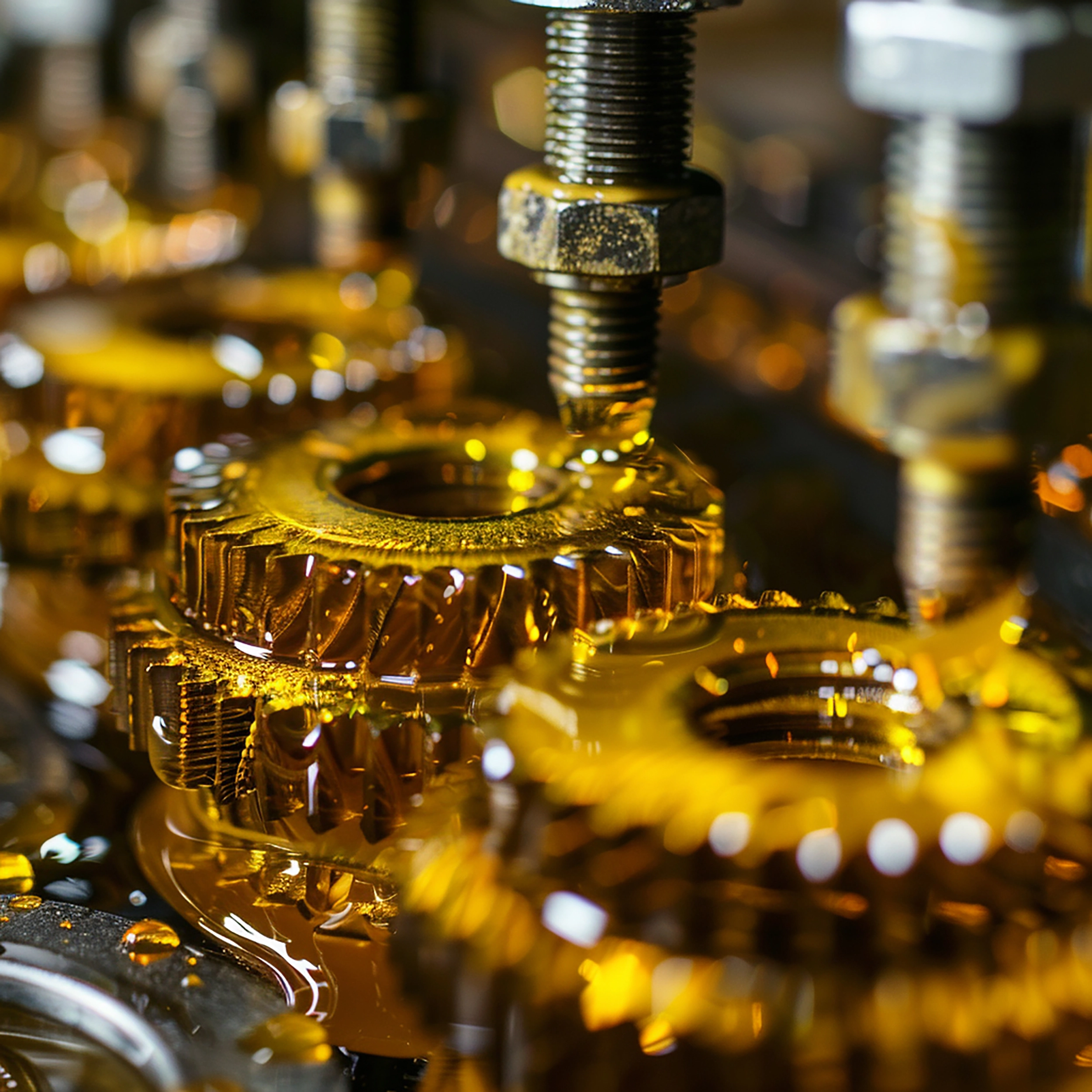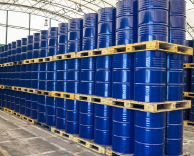Why “Just Change the Oil” Is Outdated Thinking
Introduction
We've all heard the old advice: "Just change the oil." For decades, industries and even car owners followed routine oil changes, believing this was the cure-all for a machine's longevity. However, maintenance practices have evolved, and simply changing the oil on a fixed schedule is now considered obsolete thinking. Today, smarter strategies like proactive care, oil analysis, and condition monitoring help us get the most out of lubricants while avoiding unnecessary waste. Let's dive into why the "just change the oil" mindset no longer works and what a modern approach to oil maintenance looks like.

The Old Mindset vs. Modern Reality
In the past, many organisations and individuals had a time-based approach, like changing the oil every month or three months or after so many hours of use, with no questions asked. Each of these time-based intervals, traditional or not, causes two major errors: premature oil changes (using perfectly good oil), or delayed oil changes (bad oil that stayed in too long). It can be said that if you go strictly by the calendar or odometer, you are either throwing good oil away or conversely, using bad oil that could potentially crash your equipment.
Modern maintenance flips this script. Instead of reactive or purely scheduled changes, many industries use condition-based oil changes, meaning they change oil only when needed based on its actual condition. This is a type of predictive maintenance, where decisions are made by monitoring oil health rather than assuming every oil's life is the same. It's like the difference between going to the doctor for regular checkups and tests versus simply scheduling surgery every year, whether you need it or not. By analysing the oil and the machine's needs, you act at the right time and for the right reason, avoiding both waste and risk.
Why Oil Really Needs Changing
Oil doesn't last forever, nor does it expire on a specific date. It gets chemically degraded or contaminated with external agents like water, dust, soot particles, etc. Understanding these factors helps explain why a blanket "just change it" rule is too simplistic.
Heat and oxygenation, additive depletion, particle contamination, moisture intrusion, and fuel contamination or other fluids can all be harmful to oil. Heat and oxygenation can darken and thicken the oil and harm the protective characteristics of the oil. Heat or even water can exacerbate additive loss and oil oxidation potential and performance. Particle contamination can also worsen oil oxidation or degradation by particle contamination of microscopic issues of metal particles in record caused by dust, dirt or wear from the parts of the machine being the contamination. Contaminated moisture may have come from condensation, leaks or being exposed to humid air intruded into the oil, allowing for additives depletion, sludge water and corrosion. Fuel or other fluid contamination could chemically degrade and dilute oil or possibly one or more of its additives. All of these potential oil problems can be managed to keep the oil in the proper condition between scheduled changes.
From Reactive to Proactive Maintenance
So what does it mean to be proactive about oil maintenance? It means not waiting for problems or blindly following a calendar but consistently taking steps to maintain oil quality and machine reliability. This approach falls under proactive or predictive maintenance, anticipating issues and handling them in advance. In the context of oil, proactive maintenance includes:
- Analyze and monitor oil condition:Testing the oil on a regular basis, to determine if it is still good or starting to break down.
- Filtering and clean oil: Use oil filtration systems or dehydrators to remove contaminants (like particulates and water) from the oil instead of automatically doing a full oil change.
- Scheduled inspections instead of scheduled changes:Monitor oil condition on a pre-determined basis or with sensors that continuously check oil condition and then take action on oil condition.
- Resolve the root cause: If you see a lot of dirt and water in the oil, a planned approach would also include fixing the seal, improving breathers or filters, and/or tightening up cleaning procedures so that oil is not as rapidly contaminated.
The Power of Oil Testing and Analysis
How do we know if oil is still good? This is where oil testing and analysis come into the picture. Think of it as sending a blood sample to the lab but for your machine's oil. A proper oil analysis can reveal a truckload of information about both the oil and the machine's health. It involves various tests such as viscosity, wear metals, particle contamination levels, moisture content, Total Acid Number (TAN), Total Base Number (TBN), and identifying contaminants like coolant, fuel dilution, or dirt. More advanced tests can even identify the shape of wear particles or the oil's additives.
The analysis gives a whole view of the oil condition and shows if any changes need to be made. If the oil appears good with no evidence of excessive contaminants (ignition or dust), still acceptable additives, low levels of moisture, and acid, it can stay in the machine. The oil does not need to be changed. If, however, the oil is exhausted or dirty past safe limits, an oil change or corrective action is needed quickly.
Oil analysis allows delays to avoid needless changes, as many machine OEMs allow for longer oil drain cycles if supported by a good analysis programme. This allows you to take advantage of the extra life of the oil while keeping the machine protected. Regular and accurate oil analysis is essential to drive effectiveness with the outcomes. Trend data will identify single abnormal readings over developing problems. Many companies even assign an oil analysis programme to oversee and predict the results. This assures the data is not only collected but the results are guessed smartly.
For More Information About Oil Filtration - Click Here.
Keeping Oil Clean
The main reason we change oil is because it gets dirty or contaminated. An obvious modern solution is to clean the oil. Think about a swimming pool, you wouldn't drain all the water every week. You'd filter the water and add chemicals to keep it clean. Similarly, oil filtration systems and other contamination control tools can extensively lengthen oil life. Most machines already have some filters, but there are also professional filtration setups and techniques that can be employed. For example, you can use portable filter carts to circulate oil through fine filters while the machine is running, catching the debris that a normal drain wouldn't remove. This is important because when you simply drain oil from a sump or gearbox, a lot of heavy particles that settled at the bottom may remain and mix with the new oil, meaning the fresh oil gets dirty immediately.
Filtering oil in-system gets rid of those contaminants directly, often avoiding the need for an oil change if the oil's chemistry is still good. Aside from filters, other tools include breathers (special air filters on oil tanks that remove moisture and dust from flowing air) to keep contamination out and centrifuges or dehydrators to spin out or evaporate water from oil. Particles and moisture are actually some of the easiest contaminants to remove with the right equipment. By keeping these under control, the oil can remain in service far longer without weakening machine health.
For example, many power plants and manufacturing sites with large oil reservoirs (like turbines, large gearboxes, etc.) often have offline filtration loops or purification systems that continuously clean the oil. The result is that oil changes become rare events, as they only happen when data indicates the oil has truly degraded or an irremovable contaminant (like a certain chemical or additive breakdown product) is present. In many cases, companies discover they were changing oil out of habit when they could have saved hundreds of thousands of dollars by extending oil life safely.
Lubricant Lifecycle Management
Lubricant lifecycle management allows the clever management of industrial consumer and user activity regarding oil selection, maintenance, disposal, and recycling. Waste oil generates potential and is not seen as useless. The oil would be treated as a potential resource and be reconditioned, reclaimed, or "re-refined". Reconditioned oil would be treated by applying some level of remediation work to remove the contaminant and replenish or rebuild additives. Working on established change intervals prompted by conditions allows flexibility and supports data-driven planning. The life cycle of the use of oils should facilitate the removal and collection, appropriate storage, and proper disposal of the oils. Re-refined oils are produced simply by recycling used oil with chemicals to remove contaminants and expired additives, resulting in pure base oil stock. Thus, it can be treated and blended with other additives to create new lubricants. Re-refined oils create a reduced, reliable demand for new oil to come from crude oil, and it makes good environmental sense.
Embracing the Smarter Oil Strategy
The new philosophy of oil change is knowledge-based maintenance, focusing on monitoring conditions, maintaining quality, and making informed decisions on replacement. This approach saves costs, reduces waste, and optimizes the lubricant's lifecycle. Industries are seeing the benefits, making oil replacement a last resort and reducing oil changes without compromising engine health.
It's high time to retire the old thinking and develop a maintenance culture that asks not just when to change the oil but why and uses evidence to answer that. By doing so, we join the ranks of forward-thinking engineers and technicians who know that "just change the oil" is no longer a one-size-fits-all solution. Instead, "monitor, maintain, and only change when needed" is the new way to keep our engines and machines in harmony into the future.
Learn more about our services and industry insights by visiting our official LinkedIn page: Minimac Systems





